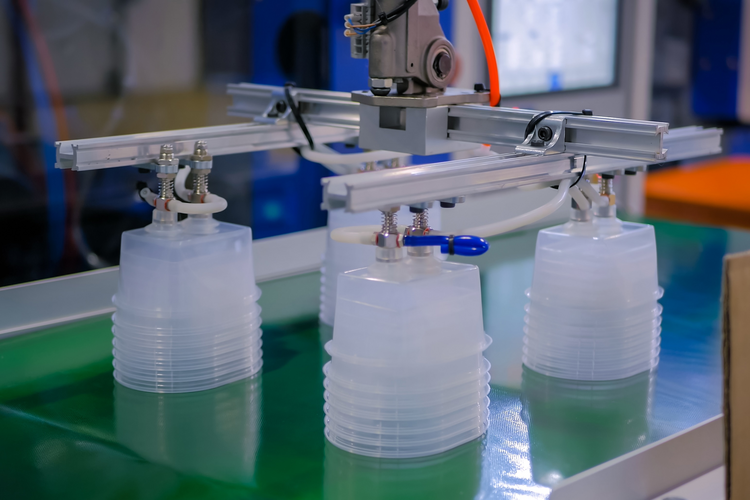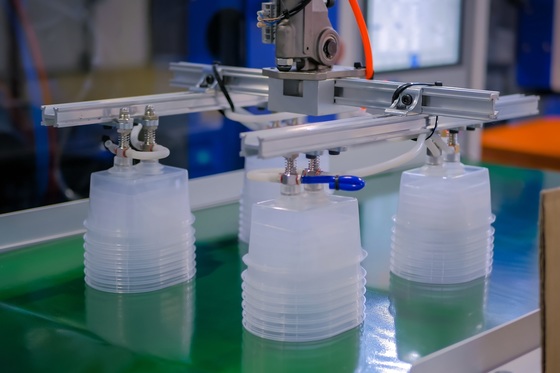Welcome to Thomas Insights — every day, we publish the latest news and analysis to keep our readers up to date on what’s happening in industry. Sign up here to get the day’s top stories delivered straight to your inbox.

“There are challenges in every industry,” says Kyra Stawson, a technical sales engineer at Xometry.
When automotive sales took a hit during COVID-19, it impacted the demand for injection molding. After all, injection molding is a trusted manufacturing process for vehicle parts because of its consistent quality and durability and because plastic parts are lightweight, allowing for fuel efficiency. It’s used to manufacture everything from bumpers to dashboards, and from radio controls to cup holders.
After a dip during COVID-19, injection molding has not only rebounded but is predicted to grow its market size. In particular, the acceleration of the packaging market is connected to injection molding because it offers microwavable and reusable solutions for food packaging, which help to reduce companies’ carbon footprint.
There are numerous advantages of injection molding. These include that the manufacturing process can provide highly complex part design; fast production and short lead times — Xometry’s injection molding lead time starts at only 10 business days — flexibility in material, color, and finishes; and low labor costs.
Still, the supply chain challenges related to COVID-19 keep coming. So, we turned to Stawson to find out how the world’s largest digital manufacturing marketplace is overcoming current hurdles in the injection molding industry.

Thomas Insights (TI): How does having an extensive, international partner base enable Xometry to overcome challenges?
Kyra Stawson (KS): There are a lot of different moving pieces. Just because you have an injection molding machine doesn’t mean you can make the parts. You have to have the proper equipment. And, you have to have the appropriate material suppliers.
We always want to find a solution no matter what. Our network of 5,000-plus partners provides us with a lot of really great solutions when we’re experiencing challenges.
TI: What are some of the current supply chain challenges in the injection molding industry?
KS: Especially nowadays with what’s going on in the world, we’ve experienced a lot of material shortages across the board. But any material that’s out there that’s commercially available, we can find a way to source it. Even if there’s a specific grade of material that our customers are requesting that’s not available, we’ll go as far as suggesting an alternative and making sure that’s acceptable for the project.
TI: How is the plastic shortage, in particular, impacting the injection molding industry right now?
KS: Raw materials shortages are heavily impacting the industry. Oftentimes, we use materials that are glass fiber reinforced, and there’s a glass shortage right now. If a certain grade of material isn’t readily available, we will propose an alternative. We’ll figure out a solution alongside the customer to ensure that it’s going to work for their application.
I work on the presales side, so what I’m trying to do is if a customer comes to me and they request a certain grade of material, I say, “Do you have maybe two other materials in mind that will work for this application just in case we have a situation where we can’t source this material?” I ask this just to be proactive, and then if it comes down to it, we’re reactive on the back side and work to provide an alternative to make sure it works for the customer. If we can’t get it, nobody can.
TI: Some sources are reporting that there are also delays getting the blocks of steel used for the molds. Are you seeing production lead times slow?
KS: Xometry-specific, we haven’t seen too much of an impact in that regard. But we offer many different levels of tool grade steel. Anywhere from aluminum to your class A 101 tools, we can source anything in between.
Being that we do operate off our partner network means that each partner already has established supply chains in place, where they have relationships with material distributors who have relationships with tool shops if they don’t do it themselves in-house. So somewhere within our network, we can find a solution.
If we can’t source something, that means that they’re not going to have much luck elsewhere. We’re always working to come up with solutions and can propose alternatives. We’re willing to help the customer figure out what they need or what they need to do if an issue like that were to come up.

Image Credit: Zyabich / Shutterstock.com


